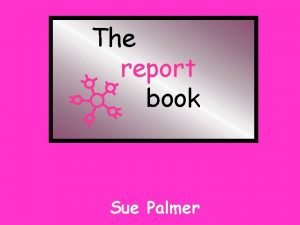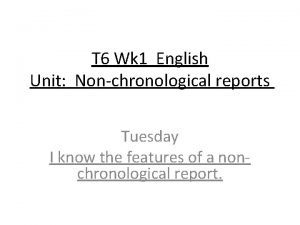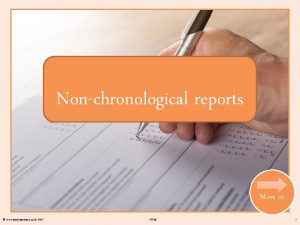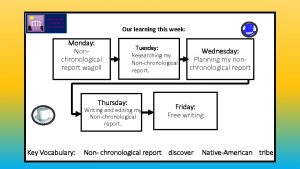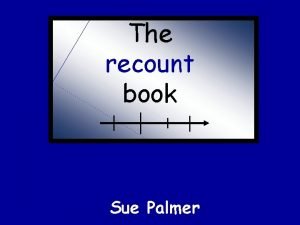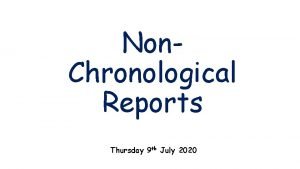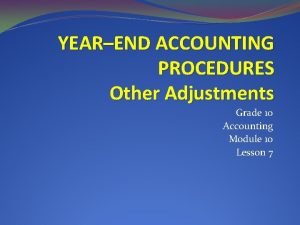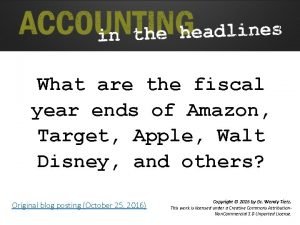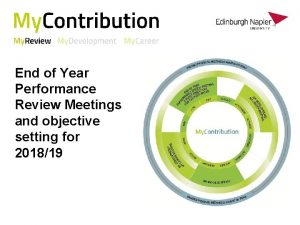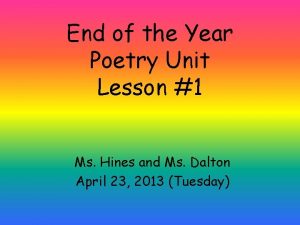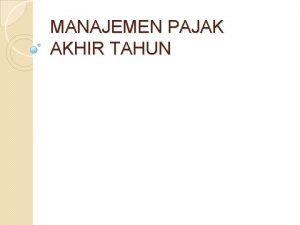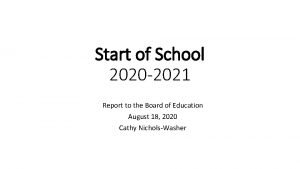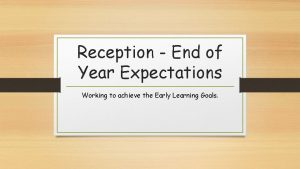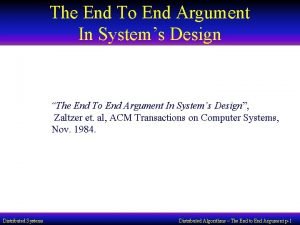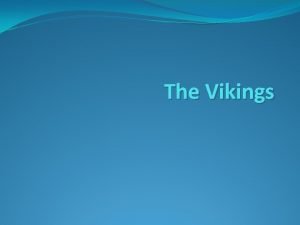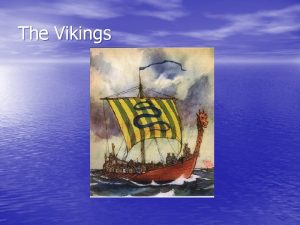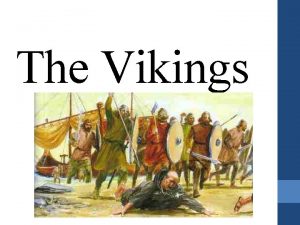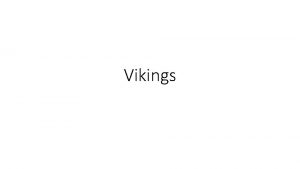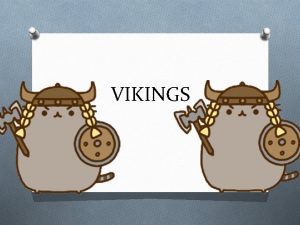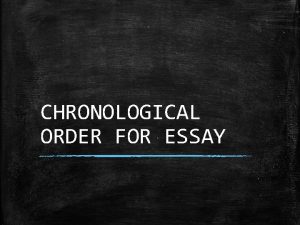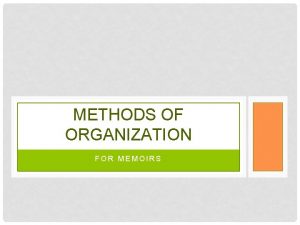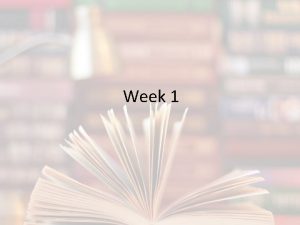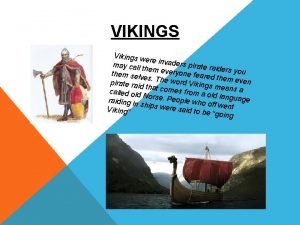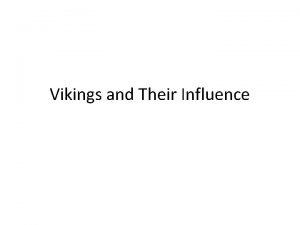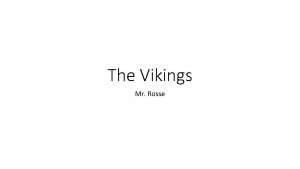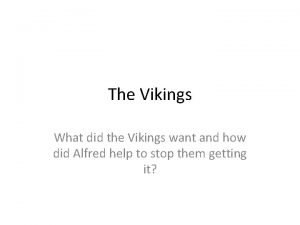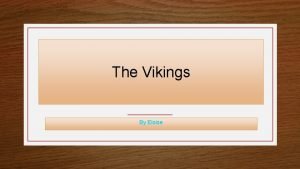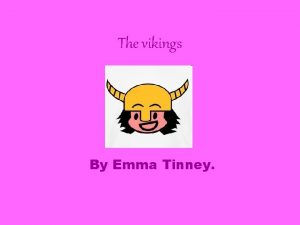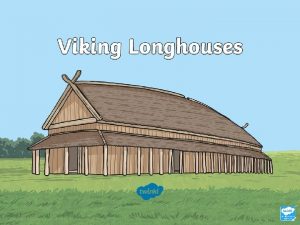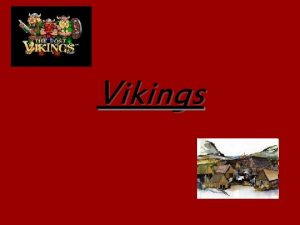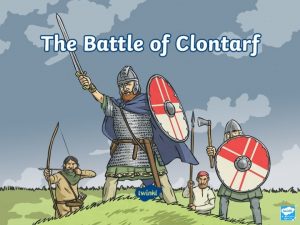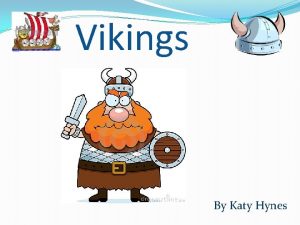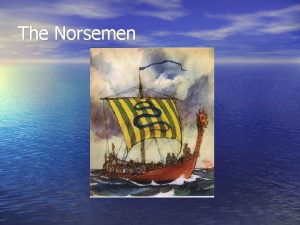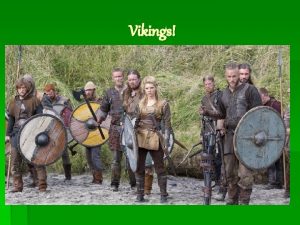Year 5 The Vikings Non Chronological Report End

























- Slides: 25

Year 5 The Vikings: Non. Chronological Report

End Result: To write a detailed and accurate non-chronological report which informs people about the Vikings. You may wish to include: why the Vikings came to Britain, where they lived and how they travelled to Britain. The following slides will support you in writing a formal non-chronological report. There is a short clip to summarise the Vikings.

Sit back, relax and enjoy… Use the following link to access the BBC Bitesize page, ‘Who were the Vikings? ’. If the link does not work, type into Google ‘Who were the Vikings BBC Bitesize’ and select the first link. https: //www. bbc. co. uk/bitesize/topics/ztyr 9 j 6/articles/zjcxwt y Watch the clip ‘Who were the Vikings? ’

Lesson 1 Spellings Review of last fortnight’s spellings: word-search Words with silent letters doubet island lanb knight linb tomb whisle plumber colum TASK: Complete the Gold word-search which includes the spellings from the last fortnight.

Lesson Common exception words – a to av 1 Here are our spellings for this cycle: accompany according achieve aggressive amateur ancient apparent appreciated attached available average

Lesson 1 Practise Complete your look, say, cover, write and check practise activity accompany Here are your spellings for this week - according achieve aggressive amateur ancient apparent appreciated attached available average Complete the look, say, cover, write and check sheet. Challenge: Log on to spelling frame and complete the ‘Segment cards’ activity, then complete 2 games of your choice.

Lesson 1 Apply Complete your picture-it spellings. For this activity you must draw one of your spelling words out but designing the letters into things which remind you of the words meaning.

Lesson 2 Summarise your initial ideas from the clip… Who were the Vikings? Where did the Vikings come from? Why did the Vikings come to Britain? How long did the Vikings stay in Britain? What did they do whilst they were in Britain? https: //www. bbc. co. uk/bitesize/topics/ztyr 9 j 6/articles/zjcxwty TASK: First watch the informative clip. Secondly, record any details you learn about the Vikings from the clip, you may wish to use the spider diagram in document 1 for ideas.

Lesson 2 Comprehension Task – Read the Non-chronological report in document two: ‘Who Were The Vikings and Where Did They Come From? ’. This will help us to absorb even more useful information about the Vikings which will come in useful throughout this unit of work. Example Q+A: Q: Where did the Vikings come from? A: The Vikings came from an area known as Scandinavia is made up of three countries: Norway, Sweden and Denmark. TASK: Look at document three. Choose a set of questions to answer about the text. Remember to write your answers in full sentences.

Lesson 3 Features of the Text Type… Sub-headings – These may include: Who are the Vikings and where were they from, Why did the Vikings choose to come to Britain, Viking raids, Viking longboats. Use of subordinating conjunctions – Before they settled in Britain, Vikings were considered blood thirsty raiders. Subject specific vocabulary – The Vikings were also known as Norsemen, they originated from Scandinavian countries during medieval teams. To use brackets for additional detail – The Vikings originated from Scandinavia (Norway, Sweden and Denmark). Check document 4 for features of the text type. Formal language Historians accept that Vikings travelled on longboats across the North Sea. Fronted adverbials – Surprisingly, some historians describe the Vikings as settlers as they began to farm British land.

Lesson 3 Features of the Text Type… Use the following key to identify the features of the text type in document five. Highlight or colour where the features appear in the text. Feature Colour Have they used sub-headings? 1 Have they used subject specific vocabulary? 2 Have they used fronted adverbials to begin sentences? 3 Have they used parenthesis in the form of brackets? 4 Have they used subordinating conjunctions? 5 TASK: Find the skills from the Success Criteria in the text in Document 5. You may highlight, underline with number annotated, or copy out under headings. Challenge – can you find other key literacy devices used in the text?

Lesson 4 Golden Lines Hunt… Read the texts in documents six and seven. Both texts are fantastic examples of non-chronological reports. Identify any golden lines or vocabulary that is particularly effective and would work in our non chronological report on the Vikings. Create a mind map of ideas. Check document 6 and 7 for short stories that can be used to find golden lines.

Lesson 4 They set out in boats called longships to ‘go Viking’ (which means to go travelling around looking for resources and land to claim as their own). Golden Lines

Lesson 5 Research – The Vikings In order for us to write an informative, detailed and accurate non-chronological report on the Vikings, we must complete some research. As the Vikings are a civilisation from the past, we are going to conduct some historical secondary research. You may wish to use the internet, books or the WAGOLLS to provide your information. Our research is going to cover three different areas: 1. Who the Vikings are and where did they come from? 2. Why did the Vikings choose to settle in Britain? 3. Viking longhouses and longships. These will form our subheadings! Can you identify some fun/interesting facts to place into your work? Check document 8 and complete research for the different sub-headings. Complete your research in note form using bullet points.

Lesson 6 Parenthesis using brackets We use parenthesis to additional information to a sentence. Without the parenthesis, the sentence would still make sense. On it’s own, the information in the brackets wouldn't make sense. Example – Sentence without brackets – The vicious Vikings originated in the region of Scandinavia. Sentence with additional information – The vicious Vikings originated in the region of Scandinavia (Sweden, Norway and Denmark). Sentence without brackets – The Vikings pillaged lots of treasure from monasteries, especially in Lindisfarne. Sentence with additional information – The Vikings pillaged lots of treasure (gold coins and jewels) from monasteries, especially in Use your research from Friday and write a series of Lindisfarne. sentences using brackets to provide additional

Lesson 7 Now it’s time to write Read the different success criteria. Decide whether silver, gold or platinum is most suitable for you. Check document 9 for differentiated success

Lesson 7 Let’s begin our Today, we are going to write our introduction paragraph for writing… our non-chronological report on the Vikings. We are going to summarise the Vikings here using all of our research. You must first select your title. Your title must clearly explain the subject of our report and stand out to the reader. As a challenge you may wish to include some alliteration. For example – The Vicious Vikings – Were they settlers and raiders? Use document 10 for a plan of what you may wish to include in each paragraph.

Lesson 7 Introduction paragraph Use my modelled paragraph to portray your introduction paragraph. You can use my example for golden lines or write your own opening. Remember to use the success criteria to guide your writing. For many centuries, the Vikings ruled huge swathes of England raiding and pillaging those who dared to stand in their path. Historically, the Vikings have established a reputation for being brutal savages however was this a truly accurate reputation of their priorities? This report will question that fundamental assumption, forwarding the idea that whilst the Vikings were violent and brutal in battle, their long term goal was to settle down in Britain. Use document 10 for a plan of what you may wish to include in each paragraph.

Lesson 8 Let’s continue our writing… Today, we are going to write our second and third paragraph of our non-chronological report on the Vikings. Information to consider in paragraph - Who the Vikings are and where they came from: • Viking traditions and beliefs. • Why the Vikings left Scandinavia? • Climate conditions in Scandinavia. • How were the Vikings received in Britain? to consider in paragraph – Why did the Vikings Information choose to settle in Britain? • What did Britain have which the Vikings wanted? • Identify Viking jobs in Britain. • Who did the Vikings battle with in Britain? • Should the Vikings be considered raiders or settlers? Use document 10 for a plan of what you may wish to include in each paragraph. Today we are going to write paragraphs two and three.

Lesson 8 Let’s continue our writing… Use my modelled paragraph to portray your second paragraph. You can use my example for golden lines or write your own based on our research. Remember to use the success criteria to guide your writing. Who are the Vikings and where did they come from? First sub-heading Use subject specific vocabulary throughout your writing. Apply parenthesis for additional information. Where is Scandinavia? What is the climate like? Why did the Vikings choose to leave? The Viking era began to define Europe in the year 700 AD. During this period, many Vikings left their homeland in Scandinavia (Sweden, Norway and Denmark) and made the risky and perilous journey to Britain in search of fame and fortune. Scandinavia was becoming overcrowded and therefore resources in their home country were beginning to fall short in supply. Initially, the Vikings were welcomed by the inhabitants of Britain however this was short lived as the Vikings violently demonstrated that they came in search of personal gain at the expense of others. Use document 10 for a plan of what you may wish to include in each paragraph. Today we are going to write paragraphs two and three.

Lesson 8 Let’s continue our writing… Use my modelled paragraph to portray your third paragraph. You can use my example for golden lines or write your own based on our research. Remember to use the success criteria to guide your writing. Second subheading Use fronted adverbials. Write in a formal • tone. What did Britain have which the Vikings wanted? • Identify Viking jobs in Britain. • Who did Vikings battle with in Britain? • Should the Vikings be considered raiders or settlers? Why did the Vikings choose to settle in Britain? As a result of severe weather and the associated uncomfortable conditions, the Vikings grew increasingly unsettled in their homeland of Scandinavia. The cold weather made it exceptionally difficult to grow healthy crops leading to food shortages for an ever expanding population. Therefore, the Vikings began to broaden their horizons to lands across the Northern Sea. Initially, the Vikings often landed in Lindisfarne where they had iconic battles with it’s inhabitants and raided monks in their monasteries. However, this aggression was often short lived as the Vikings set up sustainable farms. Use document 10 for a plan of what you may wish to include in each paragraph. Today we are going to write paragraphs two and three.

Lesson 9 Let’s Finish our writing… Today, we are going to write our fourth and final paragraph of our non-chronological report on the Vikings. Information to consider in paragraph – Longhouses and longships • Key features of a Viking longhouse. • Key features of a Viking longship. • What were Viking villages like? Information to consider in paragraph – Conclusion • Summarise your key information from the report. • Should the Vikings only be described as violent savages or were they more sophisticated. • Have you got any fun or interesting facts to enter here? Use document 10 for a plan of what you may wish to include in each paragraph. Today we are going to write paragraphs four and five.

Lesson 9 Let’s finish our writing… Use my modelled paragraph to portray your fourth paragraph. You can use my example for golden lines or write your own based on our research. Remember to use the success criteria to guide your writing. Viking longhouses and longships Third subheading Use of subject specific vocabulary. Use of clear and reliable research throughout. • • • Key features of a Viking longhouse. Key features of a Viking longship. What were Viking villages like? The Vikings made the rough and dangerous journey to Britain from Scandinavia on longships. Did you know, that even in good conditions, the journey would take on average six days? The primary aim of the longships was to provide a sleek and quick form of transport. Many longships had the capacity to hold around 120 men, this was vital to ensure that the Vikings had enough strength during raids. Both Viking longships and longhouses would be decorated with mythical creatures aimed to strike intimidation and fear in opponents. Use document 10 for a plan of what you may wish to include in each paragraph. Today we are going to write paragraphs four and five.

Lesson 9 Let’s finish our writing… Use my modelled paragraph to portray your final paragraph. You can use my example for golden lines or write your own based on our research. Remember to use the success criteria to guide your writing. Conclusion Final subheading – Conclusion/summary Use fronted adverbials to open your sentences. . Include any interesting facts you haven't been able to insert already. Throughout this report, the Vikings have been described as both being raiders and settlers. On the one hand, there are several examples of the Vikings acting as blood-thirsty warriors who cared little for the inhabitants of Britain. Such examples include their raids on Lindisfarne. Although they did attack on a regular basis, they did not wear horned helmets which they are pictured to wear in lots of representations. On the other hand, they could also be considered settlers as they began to construct villages and sustainably farm the land. Use document 10 for a plan of what you may wish to include in each paragraph. Today we are going to write paragraphs four and five.

Lesson 10 Is your non chronological report complete? Prove-it Once you have finished your writing, check through carefully and use a dictionary to check spellings (online dictionaries can be very useful during this process). Have you achieved all of your success criteria? Write down the sentences which demonstrate proof of the use of each feature on the success criteria. If you haven't managed to get a feature in, now is a great time to insert it. Leave a self assessment and get an adult to email your work through the home learning address. Also, now is a great time to add any supporting images to your text.
 Sue palmer non chronological report
Sue palmer non chronological report Non chronological report pandas
Non chronological report pandas What does non chronological report mean
What does non chronological report mean Non chronological report about egypt
Non chronological report about egypt Wagoll non chronological report
Wagoll non chronological report Sue palmer non chronological report
Sue palmer non chronological report Non chronological report conclusion
Non chronological report conclusion Last day of year 6 poem
Last day of year 6 poem Je sers un sauveur tendre lyrics
Je sers un sauveur tendre lyrics Grade 10 accounting year end adjustments
Grade 10 accounting year end adjustments When is amazon's fiscal year end
When is amazon's fiscal year end Greenville bar year end cle
Greenville bar year end cle End of year review objectives
End of year review objectives End of the year poetry
End of the year poetry Year end planning
Year end planning Adjustments in accounting grade 10
Adjustments in accounting grade 10 End of year school reports 2021
End of year school reports 2021 End of reception year expectations
End of reception year expectations Mean stroke volume
Mean stroke volume Edv and preload
Edv and preload Explain compiler construction tools
Explain compiler construction tools Explain front end and back end of compiler in detail
Explain front end and back end of compiler in detail Zirkularstapler
Zirkularstapler End-to-end wireframe parsing
End-to-end wireframe parsing End to end argument in system design
End to end argument in system design End to end accounting life cycle tasks
End to end accounting life cycle tasks
